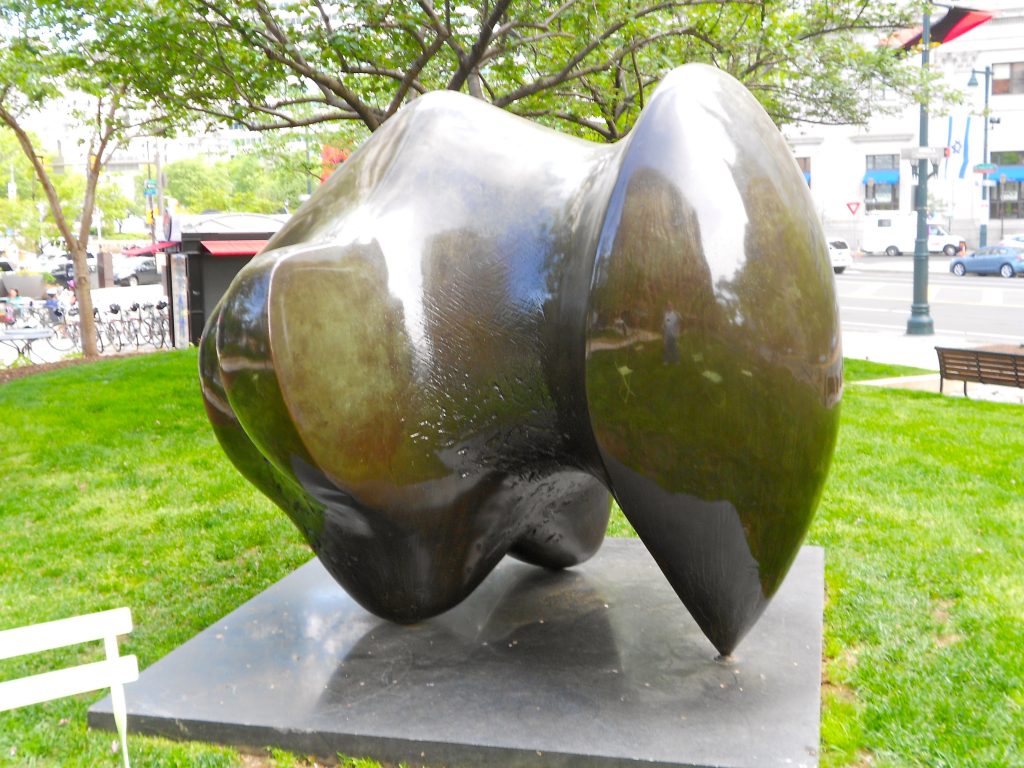
A giant tooth? A weirdly shaped bone or rock? Henry Moore’s chubby, one-ton bronze, poised on three delicate points, suggests different interpretations from different angles. Both prolific and highly respected, Moore has been called the most influential sculptor of the 20th century.
“Sculpture,” said Henry Moore, “should always at first sight have some obscurities, and further meanings.” His one-ton bronze on the Parkway is an example of such visual ambiguities. It may appear to be a massive, polished, three-pointed stone—and in fact Moore kept a similarly shaped pebble in his studio for years.

On the other hand, the bronze also looks like a weighty animal, with its three “points” like paws on which it delicately balances. Some have said that it resembles a hunched bird. From certain angles it even suggests a giant tooth or a gnawed bone. Whatever one’s first impression may be, the work changes as the viewer walks around it.
Philadelphia’s Three-Way Piece was purchased by the Fairmount Park Art Association in 1967 and installed in John F. Kennedy Plaza that year. In November 1990 the sculpture was relocated to a landscaped area along the Parkway.
Adapted from Public Art in Philadelphia by Penny Balkin Bach (Temple University Press, Philadelphia, 1992).






























